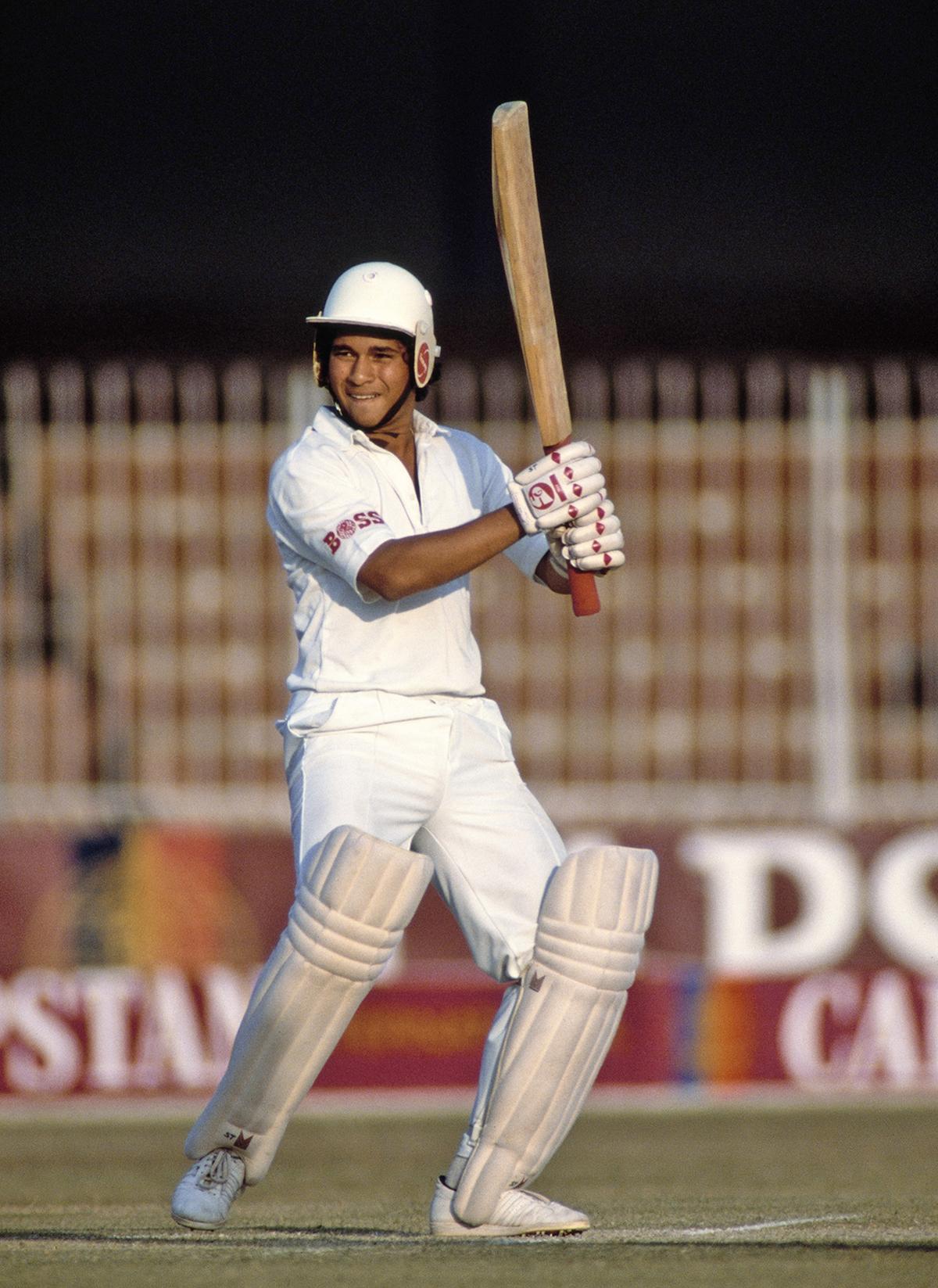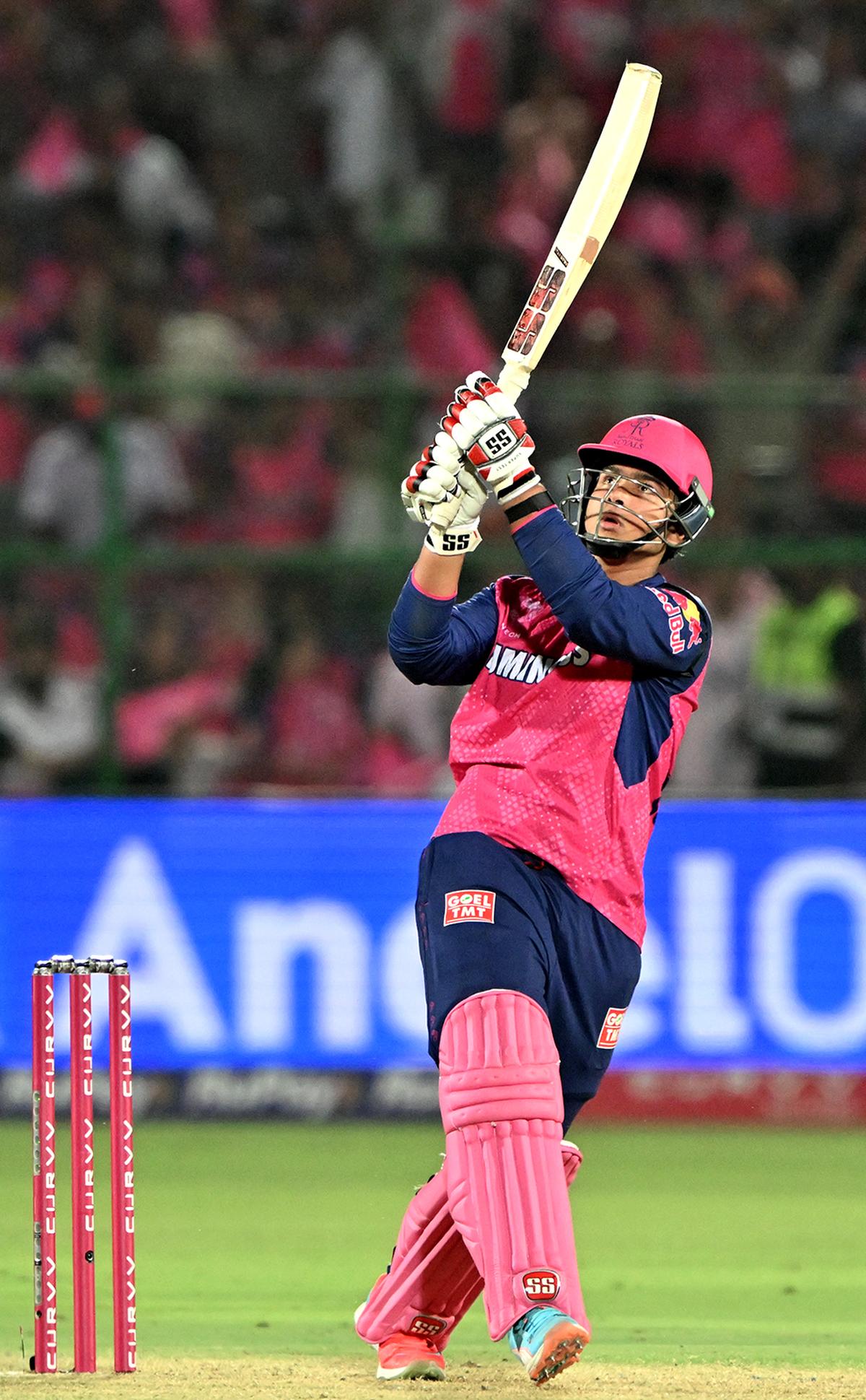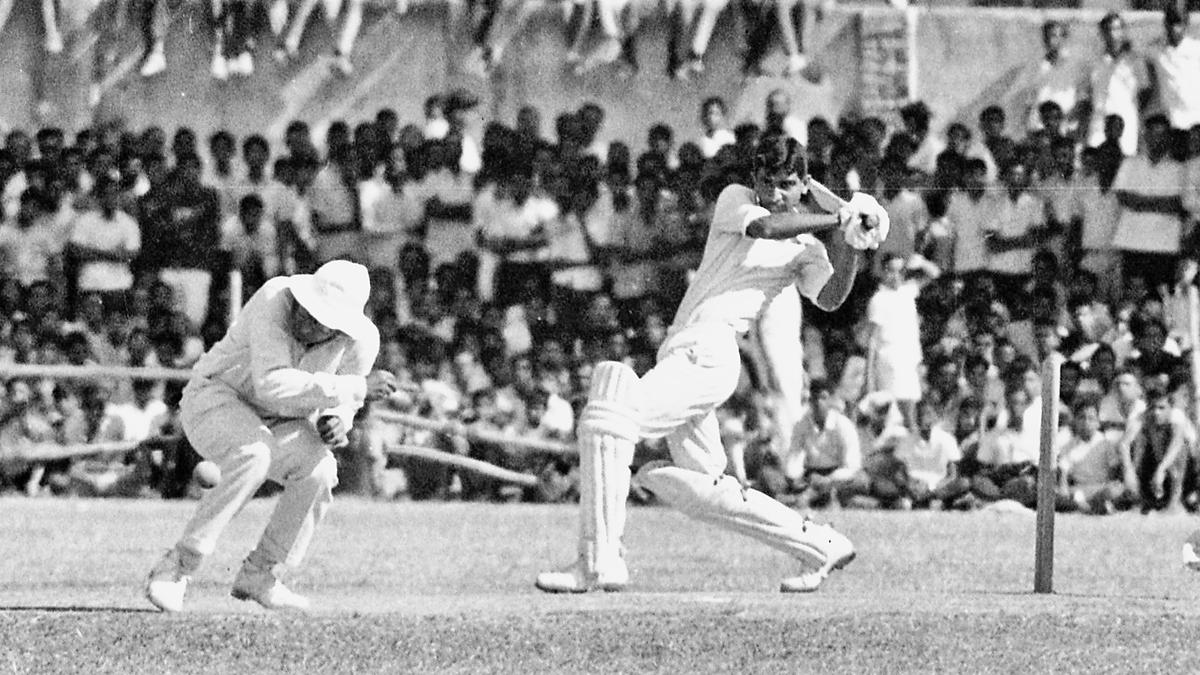A little under a fortnight ago, the Indian Premier League turned 18. A fortnight prior to that, Vaibhav Suryavanshi celebrated his 14th birthday.
Taken individually, those two sentences are unlikely to excite, merit even a second thought. So what, it happens, right? Events age, even kids grow older. But put them together in context, and Suryavanshi’s extraordinary accomplishment on an irregular Monday night assumes jaw-dropping proportions.
The IPL’s youngest centurion is four years younger than the tournament itself. Now, when did anyone ever foresee that?
The left-hander from Bihar’s Samastipur district went from novelty to sensation in precisely 55 minutes and 35 deliveries. After all, that’s what it took him to bring up his first senior representative hundred. The youngest, by a country mile, to smash a 20-over century. Obviously, therefore, the youngest IPL centurion. The fastest among Indians to get to three figures in the world’s most visible franchise-based T20 tournament, the second fastest of all time, only behind the Universe Boss, Chris Gayle (a ridiculous 30 balls).
In the immediacy of Suryavanshi’s other-worldly (to borrow from Ian Bishop) heroics at the Sawai Mansingh Stadium, the creative artists threw away the urge to resist temptation, hence the moniker ‘Baby Boss.’ Smart, really smart. How the Baby Boss’ career takes off from here will remain the focus of interest for a long time to come.
David vs Goliath
There is something about David taking on Goliath that appeals to our most basic of senses. David Suryavanshi was up against a plethora of Goliaths in the Gujarat Titans ranks. Mohammed Siraj. Ishant Sharma. Prasidh Krishna. All capable of touching 140 kmphs comfortably, even Ishant, now 36 and pretty much a white-ball specialist. Rashid Khan, the pixie Afghan genius who has lost his mojo somewhat but is still more than a handful. Karim Janat, his compatriot who can bowl a heavy ball and boasts 42 international T20 wickets. And Washington Sundar, that wily off-spinner who has inexplicably been used by most of his teams very sparingly and yet who keeps rising to the occasion whenever he gets his chances.
No one was holding back, you know. No one told each other: ‘Let’s be careful not to hurt the kid.’ Not before he lay into Siraj in the very first over, certainly not after he smashed Ishant to all parts of the park not long thereafter. Jaipur had seen nothing like it. India had seen nothing like it. Scratch that – the cricket world had seen nothing like it.
From Australia to England and Pakistan to the United States, the layman and the expert jerked out of their stupor to admire the young lad’s chutzpah. Just to have the courage to stand steady in his stance for one so young was admirable. To translate his ‘I am not afraid’ conviction to some of the most breathtaking stroke-play of a tournament lit up by Nicholas Pooran and Suryakumar Yadav and Jos Buttler and Virat Kohli, among others, was a massive statement from a kid who clearly is more at home smashing the mean quicks over and behind square than answering well-intentioned questions from seasoned professionals.
Inevitable comparisons
Comparisons with Sachin Tendulkar were inevitable, because that’s what we love the most – to pigeonhole and compartmentalise and anoint the next ‘X’ or ‘Y’ instead of allowing people to be themselves. Pakistan’s quicks, Imran Khan, Wasim Akram and Waqar Younis, were initially apprehensive about inflicting serious injury on the baby-faced 16-year-old on his maiden international tour in 1989, until they realised that the potential he possessed to inflict damage on their psyche was immense.

Sachin Tendulkar batting in Lahore during the 1989 tour of Pakistan.
| Photo Credit:
FILE PHOTO
More than two decades prior to that, G.R. Vishwanath had made his First Class debut, for Mysore (as the State was known before it became Karnataka in 1974) against Andhra in Vijayawada in 1967 as a slight 18-year-old. Andhra’s new-ball bowlers were N. Venkat Rao – who would later go on to become the vice-president of the Board of Control for Cricket in India – and R.P. Gupta, who both had somewhat of a reputation in local cricket. The West Indian team had visited India the previous year with Wes Hall and Charlie Griffith in town. Because Venkat and Gupta were considered ‘ferocious’, they came to be known in Andhra circles as Hall and Griffith.
The two Andhra bowlers decided to ‘go easy’ on the debutant on account of his age and his build, and agreed that they would ‘give him’ 10 runs before getting him out. Ten became 20, 20 became 40 and suddenly they were no longer benevolent souls sympathetic towards a teenager. When ‘Vishy’ was eventually dismissed for 230, then the highest by a debutant in Ranji Trophy history, they were at the end of the tether, though they couldn’t obliquely stop praising themselves: “Maybe we shouldn’t have given him those easy runs early on.”
Unusual but not accidental
Suryavanshi didn’t enjoy the same freebies, but then again, he didn’t need them, did he (not that Vishy did)? His is no accidental success story. Unusual, certainly, but not accidental. He was playing Under-19 cricket for Bihar when 12. He made his first-class debut at 13, and turned out for India Under-19, also last year, when still 13. His exploits were beginning to spark whispers when junior selection committee chairman V.S. Thilak Naidu travelled to Chandigarh in the third quarter of 2023 to witness the Under-19 Vinoo Mankad Trophy. So taken in by the youngster’s presence and command at the crease was the former Karnataka wicketkeeper-batter – who himself had represented India at the Under-19 level – that he suggested to his colleagues that Suryavanshi be fast-tracked.
There were the inevitable ‘He is too young, he has time on his side’ comments but eventually, they all came around, especially once V.V.S. Laxman, the boss at the National Cricket Academy (now the Centre of Excellence) who oversees the developmental squads, was also supremely impressed with what he saw. Suryavanshi was still a work in progress, but when one is identified at 12 as a work in progress, wow!
Entirely at home in the country vs country Under-19 landscape, he smashed a 62-ball 104 on ‘Test’ debut against Australia in Chennai last September. Exhilarating, free-spirited, enormously charming. Vaibhav Suryavanshi was close to the real deal.
When he went to Rajasthan Royals for ₹1.1 crore at the big auction in Jeddah in November, quite a few eyebrows were raised. The Royals aren’t known to be big spenders, and Rahul Dravid, their new head coach, is a very balanced individual not given to excesses of anything. The former India captain might have felt at one stage that 13 was too young to be playing Under-19 internationals, but Suryavanshi’s precocious, unmistakable talent has won him over, too.

Rajasthan Royals player Vaibhav Suryavanshi.
| Photo Credit:
R.V. MOORTHY
Uninhibited celebration
Dravid’s uninhibited celebration of Suryavanshi’s century – he forgot his Achilles’ injury, he jumped off the wheelchair he has occupied for nearly two months – will remain one of the images of this IPL, as much as the protagonist himself taking off his helmet, stretching his hands wide and then offering a salute with the bat towards the dugout. It seemed as if Suryavanshi was a little unsure of what to do, now that he had got to the Promised Land. That’s not a bad thing, really, at a time when players come prepared for milestone-celebrations – including carrying chits of paper in their pockets.
Suryavanshi’s world won’t be the same again, let’s not make any mistake about that. It’s important now that he is surrounded by good people, people who aren’t in it for the spotlight and the attendant gains that come from being associated with the successful but people who have his best interests at heart and who understand that this is just the beginning, not a grand end in itself.
Fortunately, Suryavanshi has two of India’s greatest champions in his corner, men who continue to carry themselves with dignity and equanimity, who ensured that in their greatest hours, they remained firmly grounded and didn’t get carried away. Dravid at RR and Laxman at CoE will leave no stone unturned in ensuring that Suryavanshi’s focus doesn’t stray. They can’t do it all on their own, but from all accounts, Suryavanshi has terrific parental support as well, which is half the battle won.
It will be foolhardy to expect Suryavanshi to keep embracing success all the time. At various stages during his century, one was tempted to scream out, ‘Hey, don’t try to smack every ball’, until the realisation dawned that this is a 14-year-old doing non-14-year-old things. He will entertain, but he will also exasperate and infuriate sometimes. He will throw his wicket away, he will shed a few tears like he did after being dismissed for 34 on IPL debut (surprise, surprise, he hammered his first ball for six) and he will court greater failure than success because that is the nature of the cricketing beast.
All that is par the course. What isn’t, is how he is handled from here, and how he handles himself. Tendulkar was 15 and 16 when he started to make waves beyond schools cricket, but that was more than three and a half decades ago when social media was non-existent, when pressures were more internal, when expectations were tempered (at least at the beginning of the great man’s career) and when trash-talk was a no-no. But there is no precedent when it comes to Suryavanshi. 14 years old, 35-ball IPL century. Unprecedented, unlikely to be emulated in a hurry. There are no rules, no predetermined route to tread, no pathway to follow. Suryavanshi will have to learn on the go. To learn from the mistakes of the past. Fortunately, he has excellent counsel to fall back on. And even more fortunately, at 14 – simply can’t get over that number – he doesn’t have to worry about these things. Just about not eating too many jalebis, and retaining his six-hitting mojo. Now, which of them is easier, Suryavanshi?
Published – April 30, 2025 10:24 pm IST

